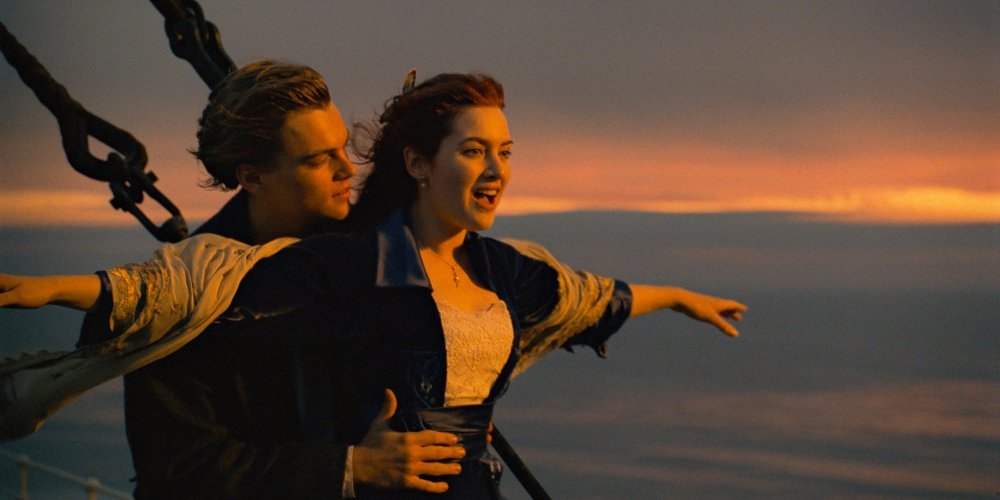
Titanic 25 Years Later: James Cameron’s Epic Returns
It’s been 25 years since the release of James Cameron’s cinematic masterpiece, Titanic, and the film continues to captivate audiences worldwide. As the iconic love story returns to theaters in a stunning 4K 3D remastered version, it’s the perfect time to reflect on the enduring legacy of this unforgettable epic.
A Cinematic Juggernaut
Titanic is undoubtedly one of the greatest successes in the history of cinema. The film’s recent re-release has once again filled theaters around the world, a testament to its enduring popularity. This is not the first time Titanic has been re-introduced to audiences; in 2012, the film was re-released to commemorate the 100th anniversary of the Titanic disaster, and in 2017, it was brought back to the big screen for the 20th anniversary of its original release.
The fact that Titanic continues to be re-released and celebrated is a clear indication of its cultural significance. This is a film that has left an indelible mark on multiple generations, transcending time and captivating audiences of all ages. The emotional resonance, the technical mastery, and the timeless themes of love, tragedy, and human resilience have all contributed to Titanic’s enduring legacy.
James Cameron’s Visionary Approach
At the heart of Titanic’s success is the visionary direction of James Cameron. Cameron is a filmmaker who has consistently delivered some of the biggest blockbusters in cinema history. Three of the top five highest-grossing films of all time are directed by Cameron: Titanic, Avatar, and Avatar 2.
Cameron’s meticulous attention to detail, his dedication to research, and his commitment to creating an immersive cinematic experience are all hallmarks of his filmmaking approach. In the case of Titanic, this dedication was particularly evident. The film’s historical accuracy was ensured through extensive research, consulting with historians, and expeditions to the wreckage of the Titanic itself to capture the most authentic details.
This attention to detail is what sets Titanic apart and elevates it beyond a simple historical drama or romance. Cameron’s ability to seamlessly blend real-life events and characters with a fictional narrative is what makes the film so compelling and memorable. By grounding the story in the realities of the Titanic disaster, Cameron was able to create a sense of immersion and emotional investment that resonates with audiences to this day.
Titanic’s Enduring Romance
At the heart of Titanic’s narrative is a timeless love story between the film’s two protagonists, Jack (played by Leonardo DiCaprio) and Rose (played by Kate Winslet). The extraordinary chemistry between these two actors has become one of the most iconic and memorable romantic pairings in cinema history.
The relationship between Jack and Rose is not just a simple romance, but a complex and nuanced exploration of class, societal barriers, and the power of human connection in the face of adversity. The contrast between Jack’s free-spirited adventurer and Rose’s privileged, sheltered existence creates a dynamic that is both compelling and relatable.
One of the most striking aspects of Titanic’s romance is the way it is woven into the larger historical context of the Titanic disaster. The film skillfully blends real-life events and legends with its fictional narrative, creating a sense of authenticity and emotional resonance that is unparalleled.
The iconic scene of the Titanic’s orchestra playing “Songe d’Automne” as the ship sinks is a prime example of this. For decades, one of the prevailing legends surrounding the Titanic was that the ship’s orchestra played “Nearer, My God, to Thee” as the vessel went down. The decision to incorporate this legend into the film, while also creating a new, equally powerful musical moment, is a testament to the film’s storytelling prowess.
Symbolism and Sentimental Connections
Titanic is a film that is rich in symbolism and sentimental connections. The significance of the iconic “Heart of the Ocean” necklace, which serves as a physical representation of the film’s central themes of love, loss, and the enduring power of memory, is a masterful example of the film’s ability to use objects and imagery to convey deeper emotional resonance.
The necklace, which is passed down through generations and ultimately becomes a link to the film’s tragic events, is a perfect bridge between the film’s historical context and its powerful love story, serving as a tangible symbol of the trauma and passion that unfolds on the doomed ship.
Beyond the necklace, Titanic is filled with other symbolic elements that have become ingrained in the cultural consciousness. The film’s use of music, particularly the haunting melody of “My Heart Will Go On” performed by Celine Dion, is a powerful aural representation of the film’s emotional core.
The film’s final moments, particularly the scene of the ship breaking in half and sinking into the icy waters, have become a visual shorthand for the Titanic disaster, transcending the boundaries of the film itself.
Titanic’s Impact on Filmmaking and Popular Culture
Titanic’s influence extends far beyond its own narrative. The film has had a profound impact on the way audiences and filmmakers alike approach the medium of cinema. The meticulous attention to historical detail and the seamless integration of real-life events with fictional storytelling have set a new standard for historical dramas and disaster films.
One of the most significant aspects of Titanic’s legacy is the way it has shaped the visual representation of the Titanic disaster in the public consciousness. The film has become the dominant visual reference for the tragedy, rather than actual historical photographs from 1912.
This is a testament to the power of the film’s cinematic vision and the way in which it has indelibly etched the Titanic’s story into the collective memory of audiences. The probability of someone imagining the Titanic based on a historical photograph is now much lower than the likelihood of them picturing the ship as it appears in the film.
Titanic’s impact on popular culture is equally profound. The film has inspired countless references, homages, and parodies in subsequent films, television shows, and other media. The chemistry between DiCaprio and Winslet has become a benchmark for on-screen romantic pairings, and the film’s iconic moments have become embedded in the cultural zeitgeist.
Titanic’s Legacy and the Future
As Titanic celebrates its 25th anniversary, it’s clear that the film’s legacy will continue to endure. The film’s re-release in stunning 4K 3D is a testament to the ongoing demand for this cinematic masterpiece, and the fact that theaters around the world are once again filled with eager audiences is a testament to the film’s timeless appeal.
Looking to the future, the film will likely be re-released again in the years to come, as its impact on multiple generations ensures that it will remain a cultural touchstone for decades to come. The personal connection to the film, recalling the sense of awe and wonder felt upon first seeing it, is a testament to the enduring power of Titanic’s storytelling and the way in which it has become woven into the fabric of our collective cinematic experience.
In conclusion, Titanic stands as a true cinematic masterpiece, a film that has transcended its own time and place to become a timeless, iconic work of art. Through its masterful blend of historical accuracy, emotional resonance, and technical innovation, Titanic has cemented its place as one of the most significant and influential films in the history of cinema. As audiences continue to rediscover and celebrate this epic love story, it’s clear that Titanic’s legacy will continue to captivate and inspire for generations to come.













Publicar comentário